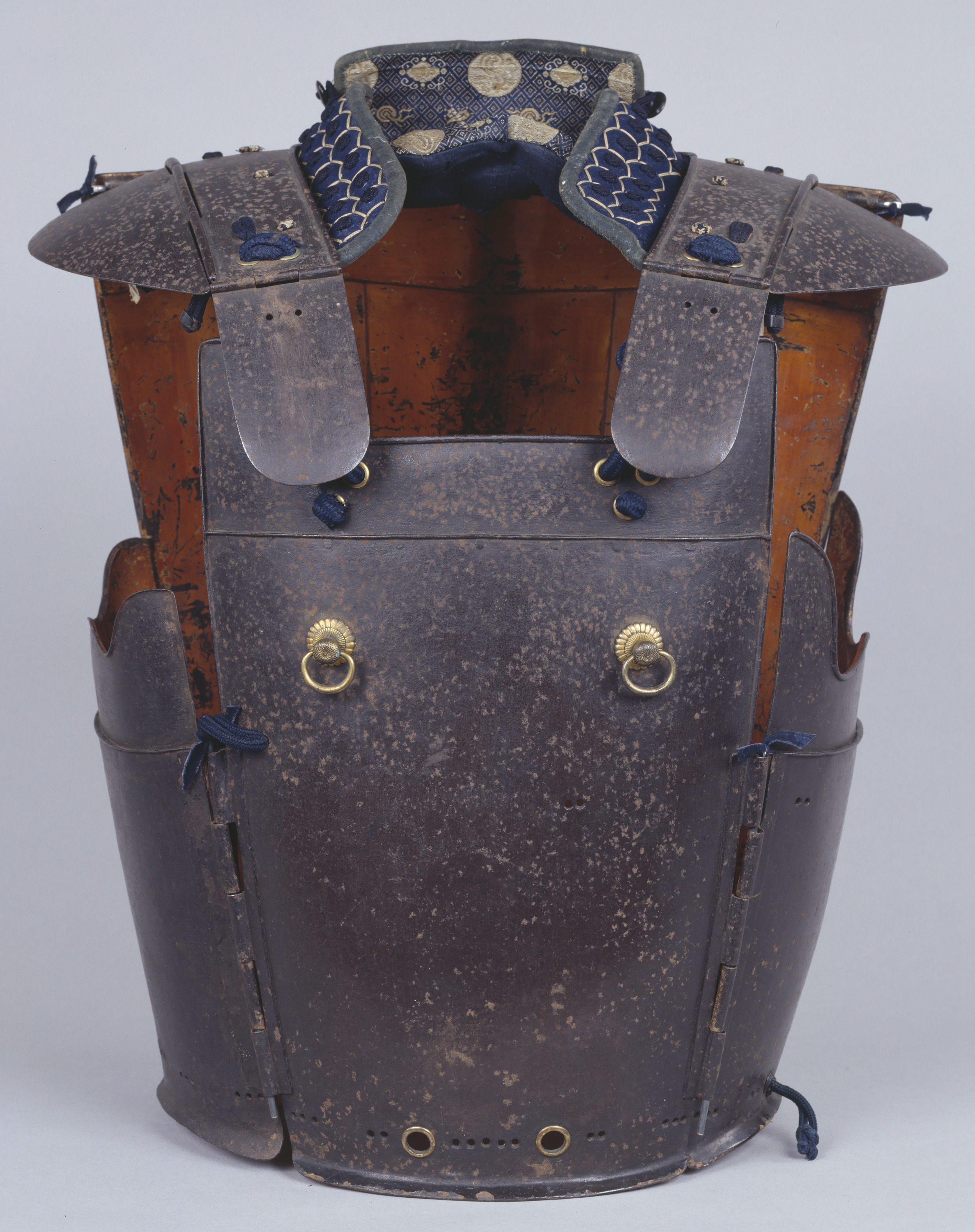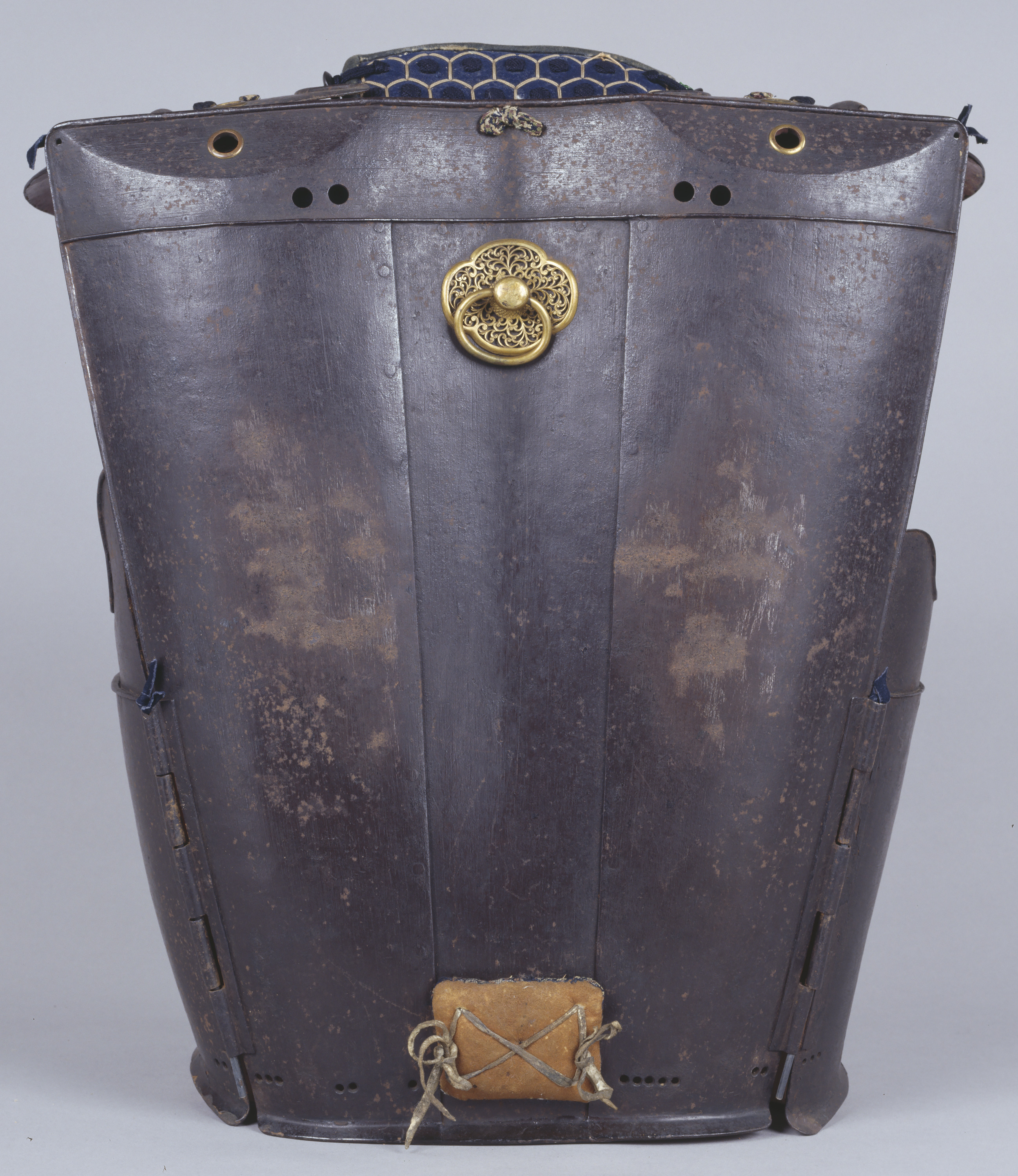- TOP
- Yukinoshita Cuirass
Overview
Yukinoshita Cuirass
- Museum No.
- EK31
Showing 1-6 of 3
| Title | Yukinoshita Cuirass |
|---|---|
| Designation | |
| Artist | Yukinoshita Hisaie |
| Category | Metalwork(E), Armor |
| Country | Japan |
| Period | Momoyama |
| Century | 17th |
| Year | |
| Quantity | |
| Materials | |
| Dimensions | Armor height 34cm |
| Inscription by | |
| Signature/Seals Etc | 銅正面裏に「雪下久家作 慶長八年六月吉日」彫銘 |
| Donor |
This object may be one within a set or the title of a set. To see all objects in the set, perform a Category Search by the Museum Number below, entering numerals only before the hyphen.











This fitted cuirass, composed of five metal plates, was designed by Hisaie, a blacksmith specializing in armor, who lived in the Yukinoshita area of Kamakura, thus it came to be called the Yukinoshita Cuirass. It was also called hodokido ('dismountable cuirass'), because the plates, held together with hinges, could be taken apart and reassembled.
The protective skirt (kusazuri) and protective sleeves (kote) of this armor have been lost, and only the cuirass remains. On the backside is the inscription, "Made by Yukinoshita Hisaie on the auspicious day of the sixth month of Keicho 8 (1603)." The earliest known work by Hisaie is dated Tensho 2 (1574). During the Keicho years, he was invited by the warlord Date Masamune to work in Sendai, where he produced armor for several years. In the Edo period, his works were also highly esteemed by the Yamauchi clan of Tosa (present day Kochi) and the Nabeshima clan of Hizen (Saga), where several archetypal examples have been found.
Japan-Momoyama